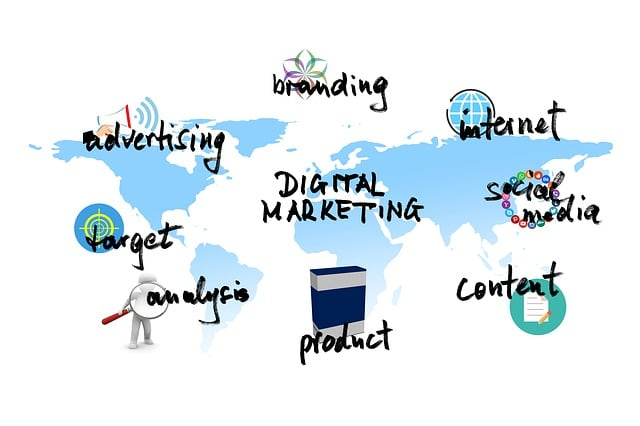Once upon a time, in the bustling world of commerce, there was a concept that stood out as the cornerstone of success: Brand Marketing. It’s the story of how businesses, big and small, weave a narrative around their products and services. This tale isn’t just about selling; it’s about creating a legacy, a distinct identity that resonates with the audience. It’s the journey of transforming a simple logo or a business name into a household name, a symbol of trust and quality. This is the essence of brand marketing.
What is Brand Marketing?
Brand marketing is the strategy and art of shaping a company’s brand. It’s about crafting and spreading the brand’s story, values, and personality to create a lasting emotional connection with the target audience.
This approach goes beyond mere transactions; it’s about building a loyal community around the brand.
Benefits of Brand Identity Building

1. Enhanced Brand Recognition
Building a strong brand identity elevates your brand’s recognition. It’s about ensuring that whenever your target audience sees your design elements or hears your brand’s story, they instantly connect it with your company.
This recognition is a vital step in fostering customer loyalty and differentiating your brand in a crowded market.
2. Increased Customer Loyalty
A solid brand marketing strategy cultivates customer loyalty. When customers resonate with your brand’s values and story, they’re more likely to stick with you.
Loyal customers not only bring repeat business but also turn into brand ambassadors, spreading the word about your brand through social media and word-of-mouth.
3. Stronger Brand Equity
Effective brand marketing efforts contribute to building strong brand equity. This refers to the value added to your product or service that comes purely from your brand’s perception and reputation.
High brand equity means customers are willing to pay a premium for your brand over others, purely because of the trust and quality associated with it.
4. Better Competitive Edge
A successful brand marketing strategy gives you a competitive edge. It’s not just about the product lines or services you offer; it’s about the emotional connection, the brand promise, and the unique identity that your brand holds in the minds of your customers.
This differentiation makes your brand more resilient against competitors.
Building a Brand Marketing Strategy: Step-by-Step
Define Your Brand Identity
Defining your brand identity is like crafting a character in a story. It’s about deciding how you want your brand to be perceived. Start by pinpointing your brand’s core values, personality traits, and unique selling points.
For example, if you’re a SaaS company specializing in project management, your brand identity might revolve around efficiency, innovation, and user-friendliness.

This identity should be reflected in everything from your logo and visual elements to your brand messaging and marketing materials.
It’s about creating a consistent image that resonates with your audience, making your brand instantly recognizable and different from competitors.
Research Your Target Market
Understanding your target market is crucial for effective brand marketing.
It involves diving deep into the demographics, preferences, and behaviors of your potential customers. For instance, if your brand markets eco-friendly products, your target audience might include environmentally conscious consumers, likely valuing sustainability and ethical practices.

Use tools like surveys, focus groups, and market research to gather insights. Analyze social media trends and customer feedback to understand their needs and preferences. This research helps tailor your marketing efforts, ensuring they resonate with the specific audience you aim to attract and retain.
Analyze Competitors
Analyzing competitors is a strategic step in brand marketing. It involves observing and learning from those in your market niche. Look at their branding and marketing tactics: What is their brand story? How do they engage with customers on social media?

For example, if you’re in the coffee industry, study how competitors position their brands – are they focusing on luxury, sustainability, or convenience? Examine their marketing materials, social media marketing strategies, and customer engagement methods.
This analysis helps identify gaps in the market, opportunities for differentiation, and ways to strengthen your brand marketing strategy for better brand recognition and customer loyalty.
Set Clear Objectives
Setting clear objectives is a cornerstone of a strong brand marketing strategy. These goals should be specific, measurable, achievable, relevant, and time-bound (SMART).

For instance, if your aim is to build brand awareness, set a target to increase social media followers by 20% in six months. If enhancing customer loyalty is your goal, aim to boost repeat customer rates by 15% within a year.
These objectives guide your brand marketing efforts, ensuring they are focused and effective. They also provide key performance indicators to measure the success of your marketing strategy.
Develop Your Brand Message
Developing your brand message is about crafting a narrative that embodies your brand’s identity, values, and purpose.

This message should resonate with your target audience and be consistent across all marketing materials. For example, if your brand is centered around sustainability, your message could focus on commitment to the environment and ethical practices.
This message should be evident in everything from your website content to your social media posts, creating a cohesive brand story. A well-defined brand message strengthens your brand’s personality and helps in building a strong, recognizable brand.
Choose Marketing Channels
Choosing the right marketing channels is vital for effective brand marketing. Your decision should be based on where your target audience spends their time and how they prefer to receive information.
For a young, tech-savvy audience, social media platforms like Instagram and Twitter might be ideal. For B2B marketing, LinkedIn and email marketing could be more effective.

Consider also the nature of your product or service; visual products might benefit from Instagram or Pinterest, while informative content could thrive on blogs or YouTube.
The key is to maintain brand consistency across these channels, ensuring your brand’s story and message are conveyed effectively.
Create a Content Strategy
A content strategy is the blueprint of your brand’s storytelling. It should align with your brand’s identity, purpose, and the interests of your target audience.
Start by identifying key themes and topics that resonate with your audience. For example, a tech brand might focus on innovation and user experience. Plan a mix of formats like blogs, videos, and infographics.
Ensure consistency in tone and style to reinforce your brand’s personality. This strategy should be flexible, allowing room to adapt to trends and feedback. Effective content marketing can significantly boost brand engagement and strengthen brand presence.
Implement Marketing Campaigns
Implementing marketing campaigns involves bringing your brand strategy to life. Each campaign should align with your brand guidelines and overall marketing objectives.
For instance, a campaign to build brand loyalty might include personalized email marketing and loyalty rewards. Use a variety of channels like social media ads, content marketing, and influencer collaborations. Ensure that your brand’s vision and values are clearly communicated in every campaign. Monitor the campaigns closely, making adjustments as needed for maximum impact.
Successful campaigns require creativity, good brand marketing tactics, and a deep understanding of your target audience.
Measure and Adjust Strategy
Measuring and adjusting your strategy is crucial for long-term success. Use key performance indicators (KPIs) to assess the effectiveness of your marketing efforts.
These might include metrics like website traffic, social media engagement, and conversion rates. Analyze this data to understand customer behavior and brand perception.
For example, if social media ads are not performing well, consider revising your marketing messaging or trying different platforms. Regularly review and update your brand strategy to stay relevant and responsive to market changes.
This ongoing process ensures your brand’s reputation remains strong and your marketing efforts yield the desired results.
Examples of Brand Marketing Campaigns
Dove: Real Beauty
Dove’s “Real Beauty” campaign is a quintessential example of successful brand marketing that resonates deeply with its audience. Launched as a long-term strategy, it challenged traditional beauty standards by featuring women of all shapes, sizes, and ethnicities, a stark contrast to the industry’s norm. This campaign was pivotal in redefining Dove’s brand positioning, aligning it with a broader, more inclusive vision of beauty. It wasn’t just about selling soap; it was about promoting self-esteem and challenging societal norms.

The impact of this campaign on brand awareness and customer loyalty was profound. By adopting a stance that many found relatable and empowering, Dove not only enhanced its brand’s reputation but also fostered a strong sense of brand loyalty. The use of real people instead of models in their marketing materials and social media ads resonated with customers, who saw their own beauty reflected in the brand’s messaging. This authenticity helped Dove stand out in a crowded market.
Moreover, the campaign’s success in social media and content marketing set new standards for what is brand marketing. It showed that aligning marketing efforts with a powerful and socially relevant brand purpose could yield significant benefits. Dove’s approach in maintaining the same tone and visual identity across all platforms reinforced its brand guidelines and strengthened its brand assets.
In essence, Dove’s “Real Beauty” campaign exemplifies how a brand can use marketing to make a positive impact while also achieving business goals. It underscores the importance of branding and marketing not just as tools for selling, but as means to connect with customers on a deeper, more personal level.
Old Spice: The Man Your Man Could Smell Like
Old Spice’s “The Man Your Man Could Smell Like” campaign stands as a landmark in brand marketing, revolutionizing not just the brand’s image but also setting a new benchmark in advertising creativity. This campaign was a masterstroke in redefining the Old Spice brand, which until then was perceived as outdated. The campaign’s witty, fast-paced monologues delivered by the charismatic Isaiah Mustafa instantly captured the audience’s attention, making the ads viral sensations.
The campaign’s success in elevating brand awareness was phenomenal. It cleverly used humor and a unique style to appeal to a younger demographic, significantly rejuvenating the brand’s image. This approach was a significant shift in their brand marketing strategy, moving away from traditional methods to something more dynamic and engaging.

Social media played a crucial role in amplifying the campaign’s reach. The interactive nature of the ads, especially the personalized video responses on social media, was groundbreaking. These efforts not only boosted customer engagement but also fostered a sense of connection between the brand and its audience. The campaign’s use of social media ads and other marketing materials was a testament to the power of integrating traditional and digital marketing strategies.
The campaign also had a notable impact on customer loyalty. By repositioning the brand to be more appealing and relevant to a younger audience, Old Spice managed to attract new customers while retaining its existing base. This shift in branding was crucial for the brand’s long-term strategy, ensuring its relevance in a rapidly changing market.
In summary, Old Spice’s “The Man Your Man Could Smell Like” campaign is a prime example of strong brand marketing. It demonstrates how a creative and well-executed marketing strategy can rejuvenate a brand, enhance brand awareness, and establish a lasting connection with customers. The campaign underscores the importance of branding and adapting marketing efforts to evolving consumer trends and preferences.
Nike: Just Do It
Nike’s “Just Do It” campaign is a powerful example of how a simple slogan can encapsulate a brand’s vision and resonate globally. Launched in 1988, this campaign transcended the realm of sports marketing, embedding itself into popular culture. “Just Do It” goes beyond a marketing message; it embodies Nike’s brand ethos of motivation, determination, and pushing beyond limits. This slogan became a rallying cry for athletes and non-athletes alike, symbolizing the spirit of perseverance and achievement.
The genius of “Just Do It” lies in its broad appeal. It speaks to personal brands and individual aspirations, encouraging people to pursue their goals, whatever they may be. This universality is a key reason why the campaign has endured for decades. It taps into a fundamental human desire to strive for more, making the branding important not just in a commercial sense, but also in an inspirational one.

Customers tend to associate Nike with this empowering message, which has been instrumental in establishing a strong connection between the brand and its diverse audience. The campaign’s success demonstrates the power of things branding can achieve when it aligns closely with a brand’s core values and communicates them effectively.
In essence, “Just Do It” is more than a marketing strategy; it’s a part of Nike’s identity. This concise, yet impactful message encapsulates the essence of the brand, showcasing the importance of a clear and powerful brand vision. It’s a prime example of how effective branding can inspire, motivate, and create a lasting bond with customers.
Coke: Share a Coke
Coke’s “Share a Coke” campaign is a stellar example of a brand marketing strategy that successfully fostered customer engagement and loyalty. Launched initially in Australia in 2011, the campaign involved replacing the iconic Coca-Cola logo on bottles with people’s names, inviting customers to find a Coke with their name or the name of a friend or loved one. This personalized approach transformed the traditional Coke bottle into a unique, shareable experience.

The campaign’s brilliance lay in its simplicity and the emotional connection it fostered. By personalizing bottles, Coke turned its product into a social phenomenon. People eagerly searched for bottles with their names, shared them with friends, and posted pictures on social media. This not only boosted sales but also significantly amplified the brand’s presence on social media platforms.
Coke’s marketing materials for the campaign were diverse, including social media ads, in-store displays, and even interactive billboards. The campaign also cleverly leveraged email marketing, encouraging customers to share stories of their experiences with personalized Coke bottles.
The “Share a Coke” campaign is a prime example of how a creative brand marketing campaign can rejuvenate a classic brand and deepen customer loyalty. It shows that brand marketing refers not just to promoting a product, but to creating an experience that resonates with the audience. The campaign’s success across various countries underscores the universal appeal of personalized marketing and the power of branding in creating a memorable and engaging customer experience.
Heineken: Worlds Apart
Heineken’s “Worlds Apart” campaign is an exemplary illustration of a brand marketing strategy that goes beyond traditional product promotion, delving into social and cultural conversations. Launched in 2017, this campaign brought together people with opposing views and beliefs, challenging them to find common ground over a beer. The campaign’s core message was about breaking barriers and finding unity in diversity, aligning perfectly with Heineken’s brand identity of promoting openness and social connection.

This campaign stood out in the realm of brand marketing for its bold approach to addressing divisive societal issues. Rather than focusing solely on the product, Heineken used its brand as a platform for a larger discussion, resonating deeply with a contemporary audience increasingly engaged in social issues. The campaign’s success lay in its authenticity and relevance, striking a chord with a global audience and sparking conversations both online and offline.
In terms of brand marketing campaigns, “Worlds Apart” set a high benchmark. It demonstrated how brands could play a significant role in societal discourse, using their influence to foster understanding and empathy. This approach not only enhanced Heineken’s brand image but also established a deeper, more meaningful connection with its audience. The campaign’s impact was a testament to the power of thoughtful and socially conscious brand marketing.



